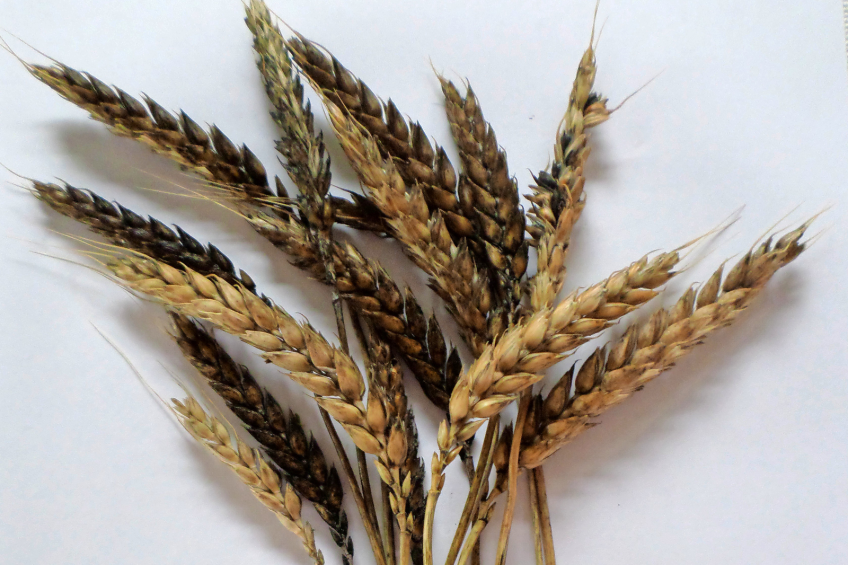Mycotoxins open the gate to infectious diseases

The direct impact of mycotoxins on animal health is well known by now. Less often discussed is their effect on the immune system, thus opening the gate to viruses. There are reasons for suspecting they have a role to play in PRRSv, PCV2 and PENS.
Mycotoxins are structurally diverse secondary metabolites of fungi that grow on feedstuffs consumed by animals. Consumption of some mycotoxins, at levels that do not cause overt clinical mycotoxicosis, suppresses the immune functions and may decrease resistance to infectious diseases. The sensitivity of the immune system to mycotoxin-induced immunosuppression arises from the vulnerability of the continually proliferating and differentiating cells that participate in immune-mediated activities and regulate the complex communication network between cellular and humoral components.
Mycotoxin-induced immunosuppression may be expressed as depressed T or B lymphocyte activity, suppressed immunoglobulin and antibody production, reduced complement or interferon activity, and impaired macrophage-effector cell function. Although the mode of action of many specific immunosuppressive effects of mycotoxins are presently unclear, inhibition of DNA, RNA and protein synthesis via a variety of different mechanisms appears to be directly or indirectly responsible for the immunosuppressive action of many mycotoxins.
Gastrointestinal tract immunity
Deoxynivalenol (DON) is a mycotoxin produced by Fusarium species and belongs to trichothecene mycotoxins. Among monogastric farm animals, swine are the most susceptible to DON as it markedly reduces feed intake and decreases weight gain. DON has also been shown to increase susceptibility to viral infections. The economic costs of mycotoxins are impossible to determine accurately, but the US Food and Drug Administration (FDA) estimated that in the US the mean economic annual cost of crop losses from the mycotoxins aflatoxins, fumonisins, and deoxynivalenol are $ 932 million.
The intestinal mucosa acts as a barrier, preventing the entry of foreign antigens including food proteins, drugs, toxins, commensal microbiota and pathogens into the underlying tissues. Following oral intake of low to moderate amounts of deoxynivalenol, the gastro-intestinal epithelial cell layer will be exposed first. The mucosal immunity, which consists of an innate and adaptive immune system, can be affected by DON. Important components of the innate immune system are the intestinal epithelial cells, which are interconnected by tight junctions, and covered with mucus, produced by goblet cells. Several studies indicate that DON is able to increase the permeability of the porcine intestinal epithelial layer and affect viability and proliferation of porcine intestinal epithelial cells. Several mycotoxins are also able to modulate the production of cytokines while DON increases the expression of TGF-β and IFN-γ in intestinal epithelial cells. At the cellular level, the main toxic effect of DON appears to be a primary inhibition of protein synthesis followed by disruption of DNA and RNA synthesis. DON affects actively dividing cells such as those lining the gastrointestinal tract. It should be noted that the gastro-intestinal tract is also sensitive to DON induced apoptosis, since such changes in the gastric mucosa, gastric granular epithelium and intestinal crypt cell epithelium.
Viruses are more effective
Fusarium mycotoxins including DON negatively affect the intestinal reovirus clearance. In 2006, it was shown that DON and T-2 suppress the host immune response to reovirus as evidenced by the inability to clear the virus from the intestine as well as by increased faecal shedding of the virus. Trichothecene exposure increased the intestinal viral load, which could increase inflammation and discomfort to the host during the infection process. The increased faecal shedding could enhance virus dissemination among individuals. These results could assume an impact of mycotoxins on host susceptibility to more virulent and aggressive viruses as Porcine Reproductive and Respiratory Syndrome (PRRS), Porcine Circovirus 2 (PCV2) or Porcine Epidemic Diarrhoea (PED).
PRRSv
PRRSv is a highly infectiovirus that replicates within the monocytes or macrophages with the lung being a predominant site of viral multiplication. Exposure of piglets to another Fusarium mycotoxin – fumonisin B1 (FB1) increased the risk for PRRSv disease. More severe histopathological lesions were observed when pigs were exposed to FB1 and subsequently inoculated with PRRSv. Researchers suggest that FB1 causes immunosuppression, facilitating PRRSv to induce more severe lesions.
PED virus
The PED virus pathogenesis and immune mechanisms are similar to those reported for Transmissible Gastro Enteritis (TGE). Oral infection results in viral replication in the epithelial cells of the small intestinal villi. Cells on colonic villi also become infected. On large breeding farms, the virus persists in consecutive litters of pigs after weaning and after they lose their immunity from antibodies in the milk. On these farms, the virus may be associated with weaning diarrhoea. The integrity of the gut is dependent on the maintenance of various factors, including enterocyte and mucus layer integrity, as well as preservation and functionality of epithelial junction cells. There is increasing evidence that the intestinal epithelium is repeatedly exposed to mycotoxins, and at a higher concentration than other tissues. The ingestion of mycotoxins may induce changes in intestinal morphology and local immunity, affecting the barrier function of the gut and finally opening the door to viral infections such as PED or TGE. Given the importance of PED in worldwide swine production and the frequent occurrence of different mycotoxins including DON, more detailed research should be performed investigating their interaction.
Porcine Ear Necrosis Syndrome
The important role of mycotoxins should be highlighted in the etiology of an important disease such as Porcine Ear Necrosis Syndrome (PENS). PENS is usually the result of mixed infections causing damage to the skin. Staphylococcus hyicus is the most common isolated agent in lesions of PENS cases, but other pathogens such as Mycoplasma suis, Streptococcus suis and spirochetes are often implicated. Moreover, non-infectious factors such as intensive pen density and overpopulation, poor air quality with high concentrations of gases (e.g. ammonia), poor hygienic conditions, copper and magnesium deficiency and cannibalism, were associated with an increased risk of incidence of PENS. Recently, an important causative role has also been attributed to immunosuppressive agents such as PCV2, PRRSv as well as mycotoxins.
Diagnosis of mycotoxin problem
There is a need for reliable and readily available laboratory diagnosis of mycotoxins in feedstuff. Many mycotoxins are present in a so called masked or conjugated form and those cannot be analysed by routine analytical methods. Synergistic and additive interactions between more mycotoxins or mycotoxins and infectious agents should be taken into consideration.
Veterinarians, feed company representatives and other people involved should ensure that feed samples are taken properly, identified unmistaken and submitted to reliable analytical laboratories.
Feed companies would be well advised to perform tests of either unprocessed grain or of the final (pelleted or crumbled) product on a regular basis to ensure wholesomeness of their product. Attention to the possibility of occurrence of mycotoxins should be of particular concern. Rapid test kits based on the ELISA method are already used worldwide.
There are no ‘safe’ or ‘unsafe’ levels of mycotoxins. Low to medium levels might be much more dangerous because they are underestimated and cause subclinical effects such as immune-suppression or suppression of antioxidant system functions.
Any disease outbreak deserves to be thoroughly investigated from various angles, e.g. necropsies of dead animals; attempts to isolate viruses and thorough investigations at the time when problems occur should be done.
Altering the susceptibility infectious diseases
In conclusion, mycotoxins may alter the animal susceptibility to infectious diseases by affecting the intestinal health and the innate and adaptive immune system. Further research will be necessary to investigate the impact of mycotoxins on infectious diseases and to develop practical, economically justified, solutions to counteract mycotoxin contamination of feed, and its effects on animal health.
References available on request.











